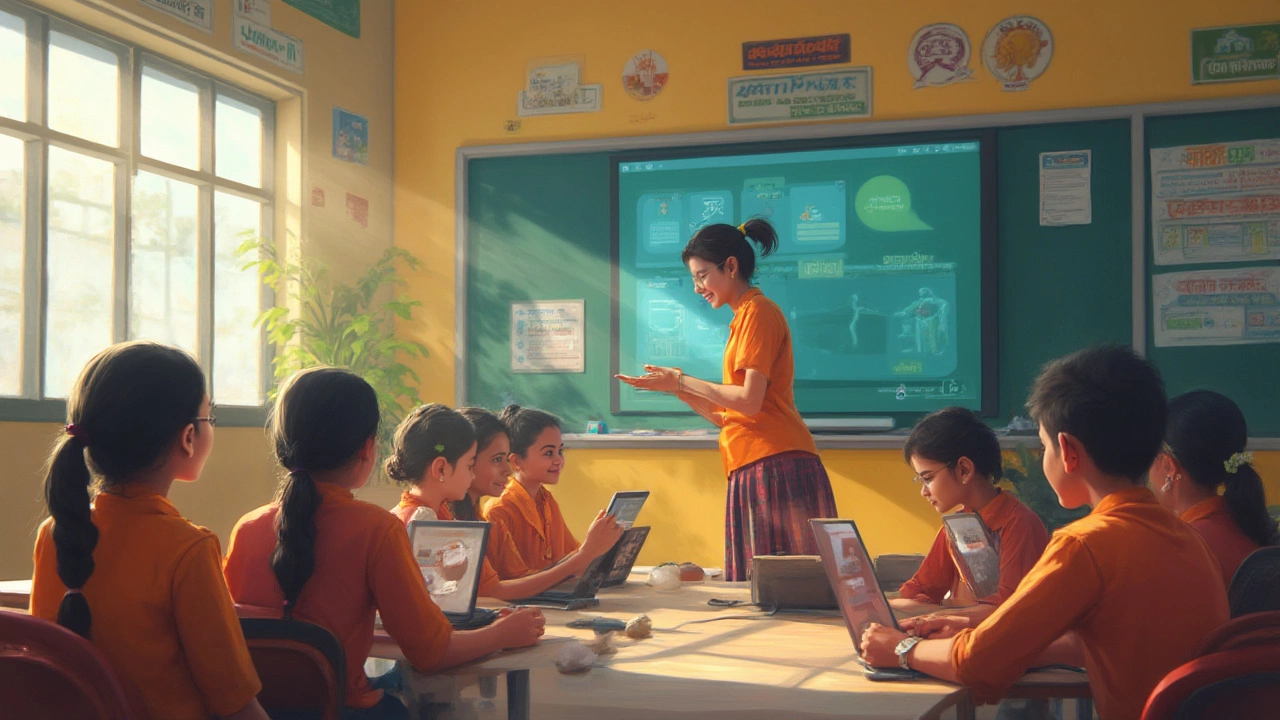Is something really free, or do you just stop seeing the price tag? You’d think that by now, everyone knows about Google Classroom—it’s practically the default tool in schools for managing digital assignments, especially if your kid’s been home with a cough and still had to press ‘turn in’ before midnight. But when money is tight or tech budgets are stretched, it’s only fair to wonder: Is Google Classroom free, and if so, who pays for what?
How Google Classroom Works Without Draining Your Wallet
If your child’s never brought home a packet but instead logged into Google Classroom, you can probably thank your school for jumping into the 21st century. Google Classroom claims to be free, and honestly, it largely is—at least for individuals. In 2025, any student or teacher with a personal Google account can create or join a class for zero dollars. No hidden fees, no trial period lurking with a credit card request.
Google Classroom is a core tool in google classroom free suite for education. Google’s pitch has always been simplicity. Teachers post assignments, students submit work, notifications keep everyone vaguely sane, and everything is neatly organized in the cloud. For parents like me, it means fewer junked-up backpacks with missing worksheets. For teachers, it’s less time spent chasing down missing assignments and more time on actual teaching.
Now for the details people don’t always spell out: Classroom, as a platform, doesn’t have a price tag if you’re a teacher running a class, a college study group, or a parent setting up a tutoring session for your kid. All you need is a Google account. But when schools start using it on a big scale—think districts with thousands of students—Google nudges them into what’s called Google Workspace for Education. There’s a free edition (Google Workspace for Education Fundamentals), and then there are paid versions with more security and premium features aimed at those giant institutions. But no, there’s no paywall if you just want to create a science class or share homework with your ten-year-old. That’s what makes it appealing to small schools and home users.
Of course, there’s a catch. Free Google Classroom comes with some limits. If you want unlimited video meetings, advanced plagiarism detection, or bulk export tools for analytics, you do need a paid Workspace account. But for 90 percent of schools, especially in early and middle education, the basic version is enough. I remember my daughter Eliora using it even at a summer camp: her instructor just needed a Gmail address, five minutes, and a group code. Nobody paid a dime.
What’s Actually Included in the Free Version?
So what do you get once you sign up? Google Classroom basically gives you a control center for learning. Students can join a class with a code, turn in homework, get feedback, and receive alerts for deadlines. Teachers can post announcements, attach YouTube content, schedule quizzes, and grade assignments. All of this runs via a web browser—no special apps needed (though the app makes life easier on tablets or phones).
Some handy facts: Teachers can make as many classes as they need. There’s integration with Google Drive for storing files, Docs for essays, Slides for presentations, and Sheets for spreadsheets, all of which are also free. The built-in Calendar syncs assignments and due dates automatically, which is a lifesaver for kids who lose track of homework—guilty as charged in my house. You can also integrate other free Google tools, like Forms for quizzes and Meet for virtual classes, though Meet’s advanced features are bound to the type of Workspace plan your school uses.
For individual families, tutoring groups, or clubs—that’s all you need. But if a school wants things like custom data regions (picking where your school’s data is stored, for privacy or law reasons), higher meeting attendance caps, or advanced admin controls, those are behind the Google Workspace paywall. Here’s a simple comparison of Google Workspace editions as of July 2025:
| Plan | Main Features | Cost |
|---|---|---|
| Education Fundamentals | Classroom, basic Meet, Docs, Drive (storage limits), Forms, limited admin tools | Free |
| Education Standard | All of above plus advanced security and analytics | Paid |
| Teaching & Learning Upgrade | Adds livestream, breakout rooms, extended Meet time, advanced classrooms tools | Paid (can be bought for some users only) |
| Education Plus | All features, everything in workspace, priority support | Paid |
This breakdown shows you that free is really free—for basic education and digital classroom needs. Only bigger schools or those with special requirements are steered toward a paid plan. If you’re a parent, you won’t get hit with extra charges just to keep up with homework or virtual classes.

Tips for Using Google Classroom Efficiently (Without Spending Money)
Using Google Classroom shouldn’t feel like you need to read a manual, but a few inside tips save a ton of hassle. First off, the class code is gold—never share it publicly unless you want strangers showing up in your online classroom. If you’re organizing assignments, use Topics (like Math, Reading, Science) so nobody gets lost wading through a sea of posts. For feedback, the private comments feature lets teachers and students talk one-on-one without anything going public—think of it like passing notes, but way more productive (and less likely to be confiscated!).
Most parents don’t realize Google Classroom can send them automatic email summaries of missing assignments and upcoming work. You just need the teacher to invite you as a guardian. It sounds small, but it’s a game changer for staying ahead of late-night homework shocks. And if storage space ever seems tight, students can just link assignments through Google Drive—again, part of the free package.
One sneaky trick teachers use: creating template files for assignments in Google Docs so every student gets their own editable copy. This keeps work organized and saves everyone time. Teachers can even track revision history if they suspect some ‘creative’ last-minute editing. And when it comes to collaboration, setting shared Docs or Slides for group projects is just a click away—no need for anyone to shell out for software or licenses.
Oh, and for those who teach more visually, adding images, PDFs, or even YouTube links is seamless. Just drag and drop. No drama, no asking IT (or your techy nephew) for help. If you want to take things up a notch, there are loads of free Chrome extensions that plug into Google Classroom, from easy plagiarism checkers to flashcard makers.
A fun stat: as of summer 2025, more than 200 million educators and students use Google Classroom worldwide. Even rural schools and afterschool clubs tap in, especially since it only needs a stable internet connection and a browser. It’s the closest thing to an equalizer in digital education, no Visa card required.
Do Schools Ever Pay for Google Classroom?
You might be thinking: if it’s free, how does Google make money? Good question. The company does offer the basics for free, but as soon as a school or district wants lots of admin control, better security, or advanced features (like anti-plagiarism tools, audit logs, and 250-person video meetings), there’s a price tag. The paid plans, like Google Workspace for Education Plus, can run schools a few dollars per user per year, depending on features and contracts. That’s still cheaper than some legacy school software, but it’s not zero dollars.
It’s a fair trade-off, right? Big schools have tougher tech needs: they want to stop file sharing outside the district, do bulk grading analytics, or hold massive online meetings. Google’s answer is to bundle these features into premium editions. For a regular parent, teacher, or student, none of this matters unless your school district insists on rolling out advanced tools—and even then, the school pays, not you.
Most public K–12 schools in the USA, Canada, UK, and Australia stick to the free version, especially for regular classroom stuff. The paid add-ons usually only surface in huge districts, private schools, and universities that demand data history, security tools, or heavy admin features. Every extra feature—like advanced plagiarism checks or video recording—unlocks only when the school upgrades its Google Workspace plan. But basic teaching, learning, group projects, and homework happen free of charge.
Some interesting facts from reports in 2024: About 68% of K–12 teachers surveyed said their school used the free version. Of schools that upgraded, the majority cited advanced security and privacy compliance as the main reason. For indie tutors, homeschoolers, or small academies, free features fit just fine—they almost never need the bells and whistles.

What About Privacy and Data for Free Users?
With anything ‘free,’ there’s always that lurking question—do you pay with your data instead of dollars? Google promises that with Google Classroom (and the broader Google Workspace for Education), student work and personal data aren’t mined for targeted ads or sold on. There have been law changes—like Europe’s stricter student privacy rules, and US FERPA compliance—that Google must stick to. These policies show up in the admin dashboards and parent handbooks, but most families only notice when permission slips or consent forms come home.
It’s wise for teachers and admin staff to use dedicated school domain accounts for students, not personal Gmail. That way, privacy controls and audit logs are turned on by default. But honestly? For a regular parent or kid just trying to do homework, Classroom feels anonymous. You join, turn in work, maybe leave a comment for your teacher. Sensitive personal info isn’t required; there’s no need for payment details or home addresses. Just your first and last name, which is pretty standard online.
Another pro tip: if you’re worried about cloud storage, Google’s basic education package still offers more than enough for assignments and lesson plans. If you outgrow the free tier, you’ll know—docs stop uploading, or you get a warning. That almost never happens to single classrooms or average families. Still, if your school ever upgrades to a premium workspace, the school’s IT crew can manage security, sharing, and backup policies centrally.
Parents should keep in mind that while student projects are stored on Google’s servers, the company does not own that work. You can download assignments, projects, and grades at any time—all for free. Unlike some other learning platforms, data portability is easy: if your kid switches schools, work can be copied or transferred without hassle. That’s peace of mind I appreciate as a dad.
So next time you wonder if Google Classroom costs anything, remember: basic use is free for teachers, students, and families. Only schools that want admin superpowers or advanced privacy settings pay for upgrades. For everyone else, there’s no bill at the end of the month—just digital homework instead of crumpled paper ones.
